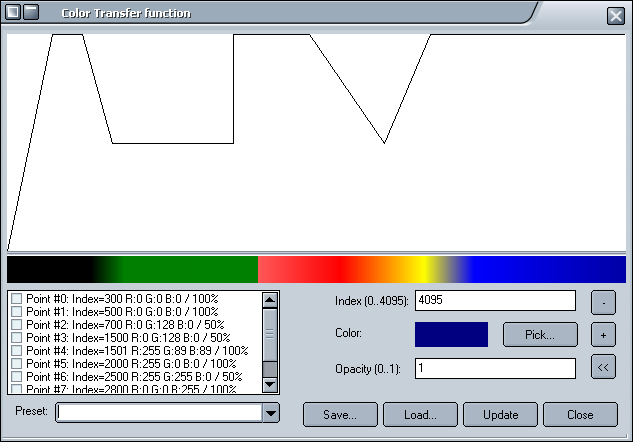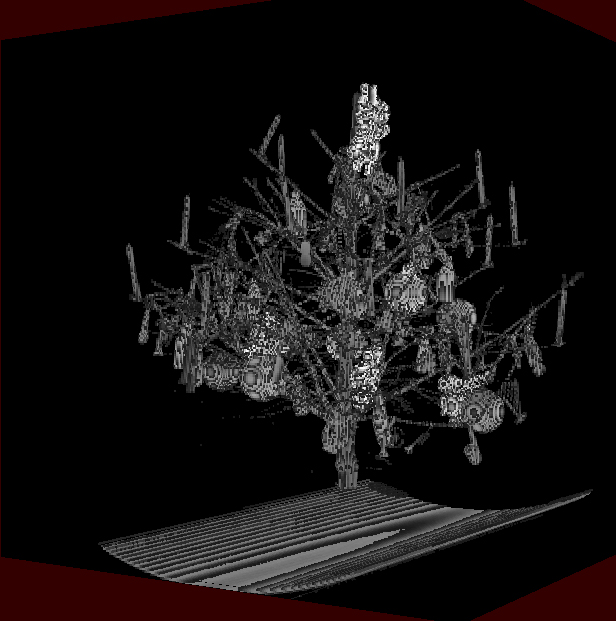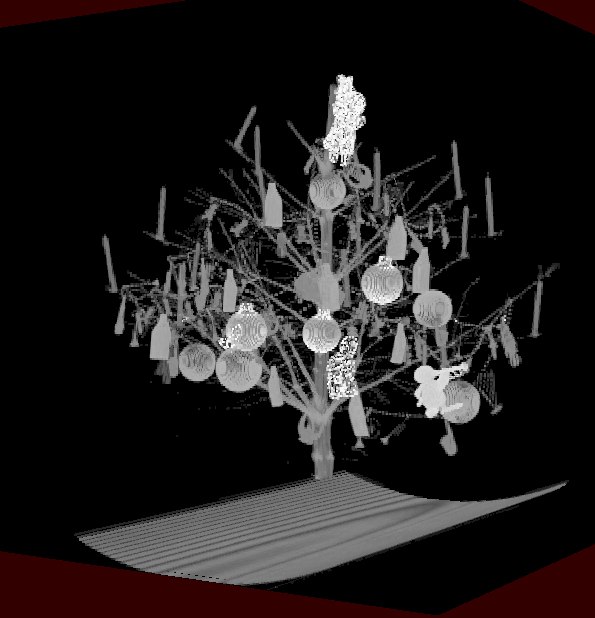Direct volume rendering is the second visualization option. This uses raycasting to create an image from the input data set. Options include a variable viewport, various combination strategies and a freely defineable transfer function for converting sample values to color and opacity values.
Renderer selection
Volume rendering is activated by selecting the "Ray-Casting" radio button inside the group box entitled "Rendering methods". Additional options have interfaces of their own that can be shown using the three buttons "Show camera control", "Show raycasting options" and "Edit transfer function".
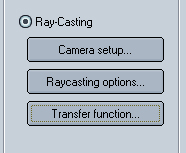
The raycasting option selected
Camera setup
This option comprises a full setup for an origin-centric viewport in R3. This means that the data set is always interpreted as being centered at the origin of karthesian space with the camera being located a certain distance from it and rotated a certain amount around each of the principal axis.
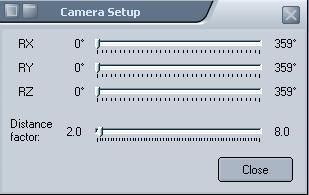
Distance
Distance is given as a factor of the longest extension of the data set. This means that if the data set has dimensions of 512x512x256 then the distance of the eyepoint from the origin can range from 2.0 * 512 to 8.0 * 512. We have found that a start factor of 2.0 guarantees full visibility of the data set. Higher factors allow for smaller screen areas to be filled which directly corresponds with faster rendering times.
Rotation
Rotation is given in degrees around each of the principal axis. Viewport construction works by initializing a position at the origin (0/0/0) with a view vector down z-axis (0,0,-1). This is translated away from the origin along the z-axis and the rotated first around the x-axis, then around the y-axis and finally around the z-axis.
Rendering options
Raycaster rendering has four principal options - combination strategy, threshold value, ceiling value and type of interpolation.
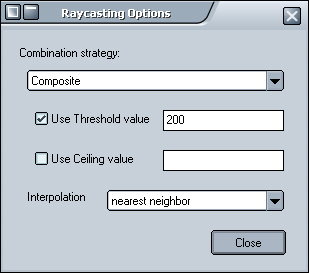
The "Use Threshold value" and "Use Ceiling value" options allow to limit the scope of sample values taken into account during value extraction. Both are specified in a range of [0..4095] in accordance with the 12 bit value range.
Combination Strategy
The combination strategy defines how values that are extracted from the data set are combined into the final sample value. Current options include as follows:
